Let's dye!-vol.1-
In this section, I would like to introduce the dyeing method.
Things to prepare ~Using food waste~
The vegetable used for the dye is onion skin.
With the help of our local supermarket, we were able to get onion skin that had fallen off the shelves.
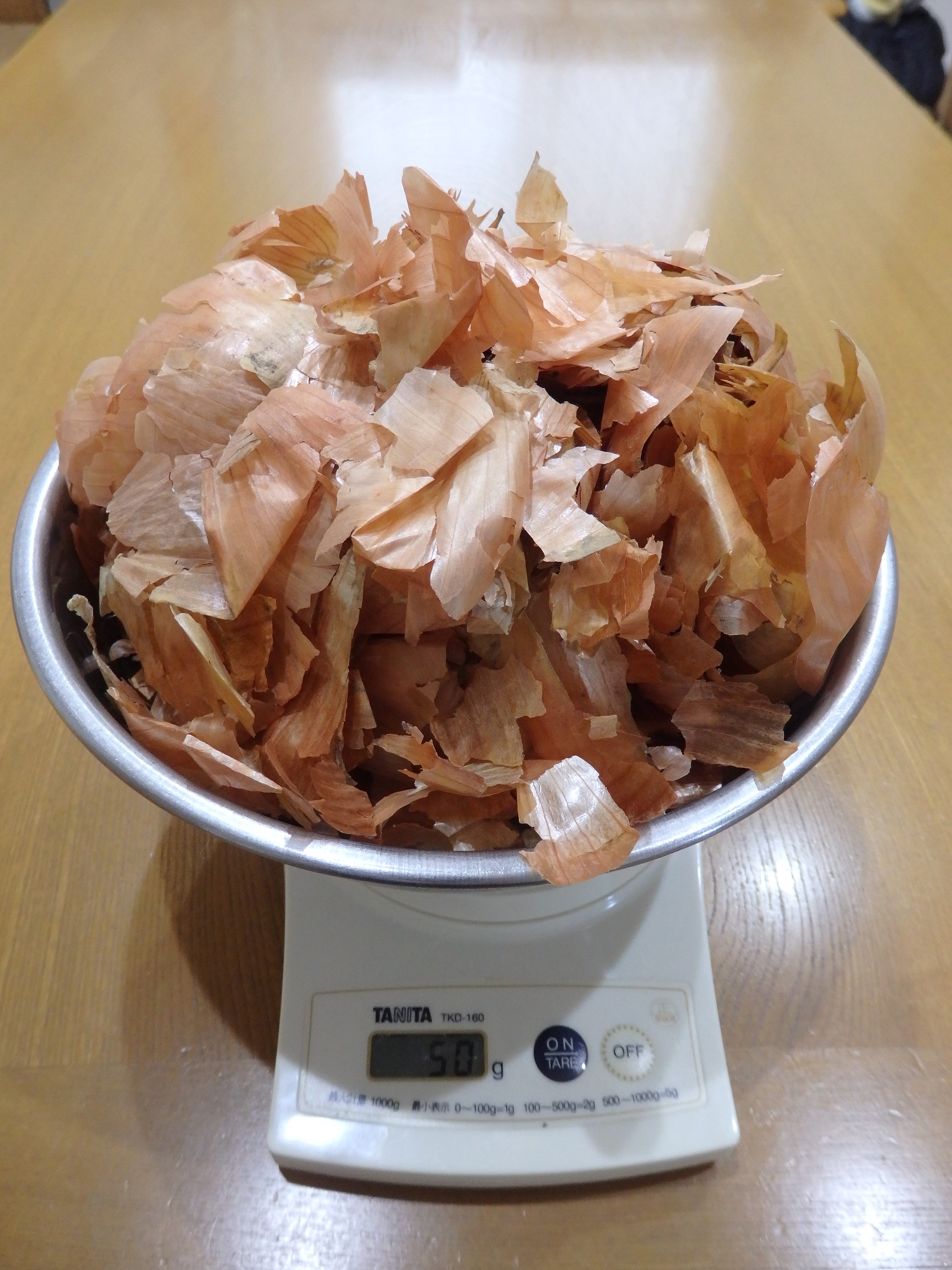
Cotton cloth (25cm x 25cm).
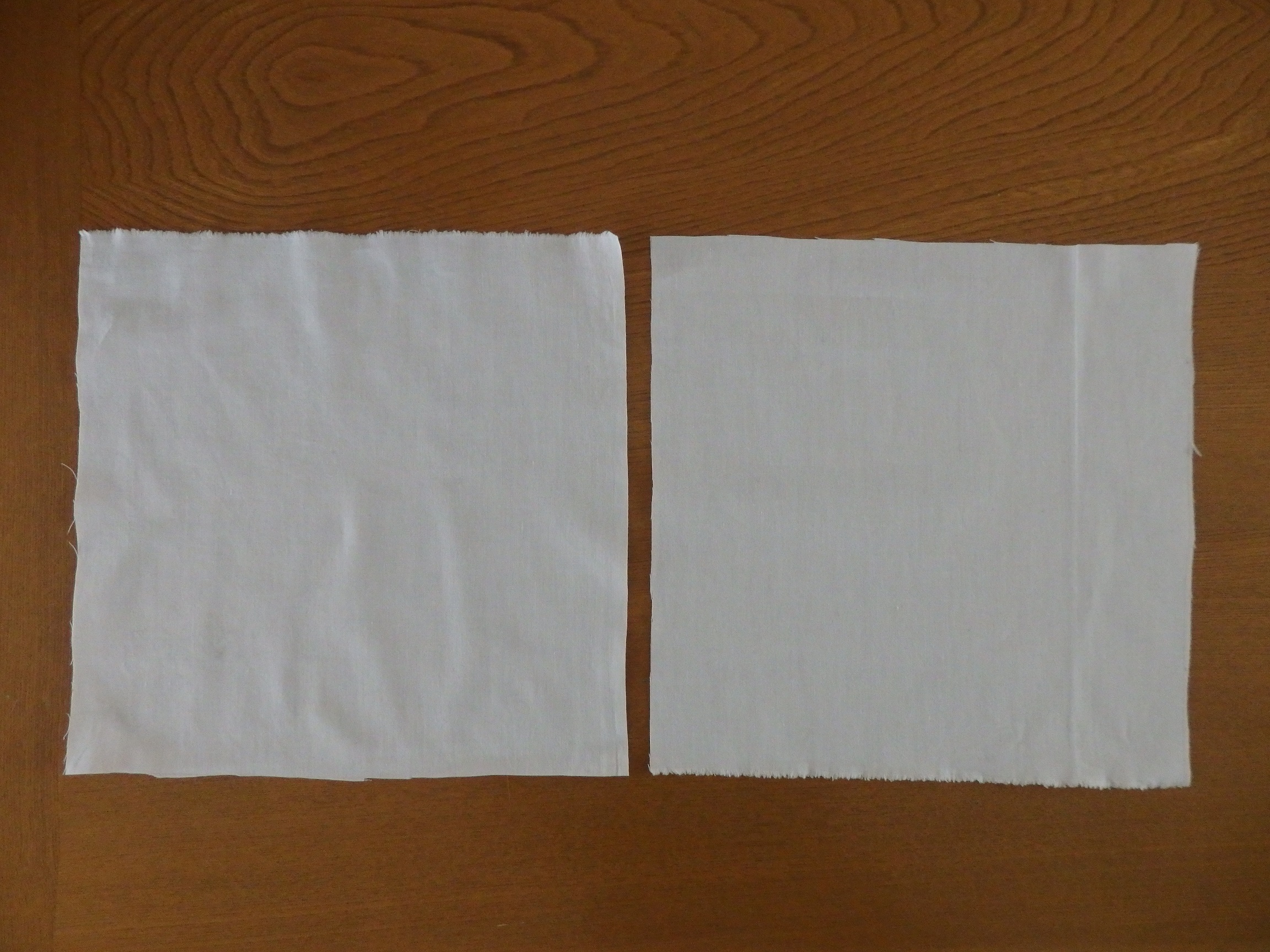

As I was able to get a lot of onion peels, I'd be able to dye some other stuff too!
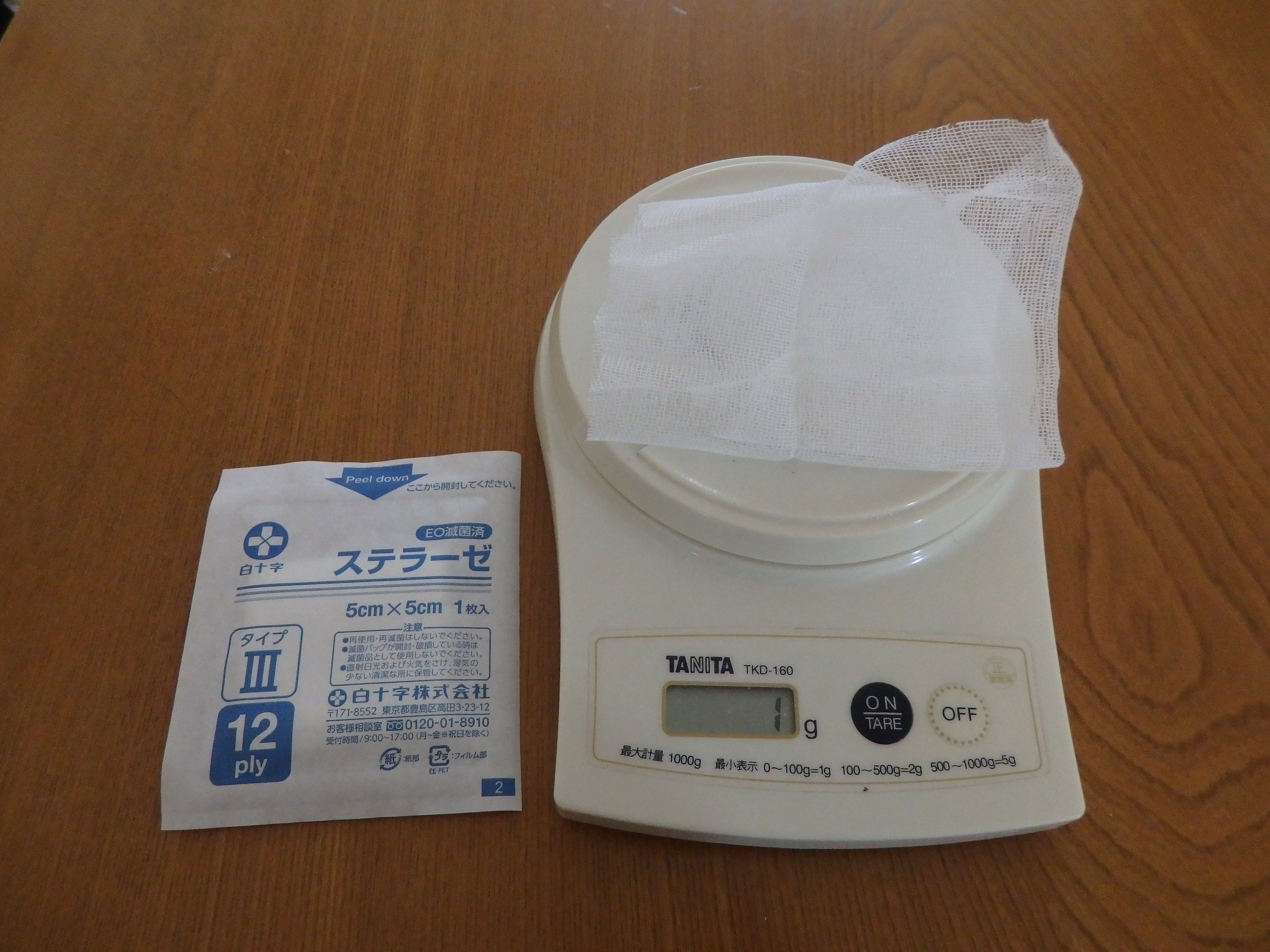 |  | 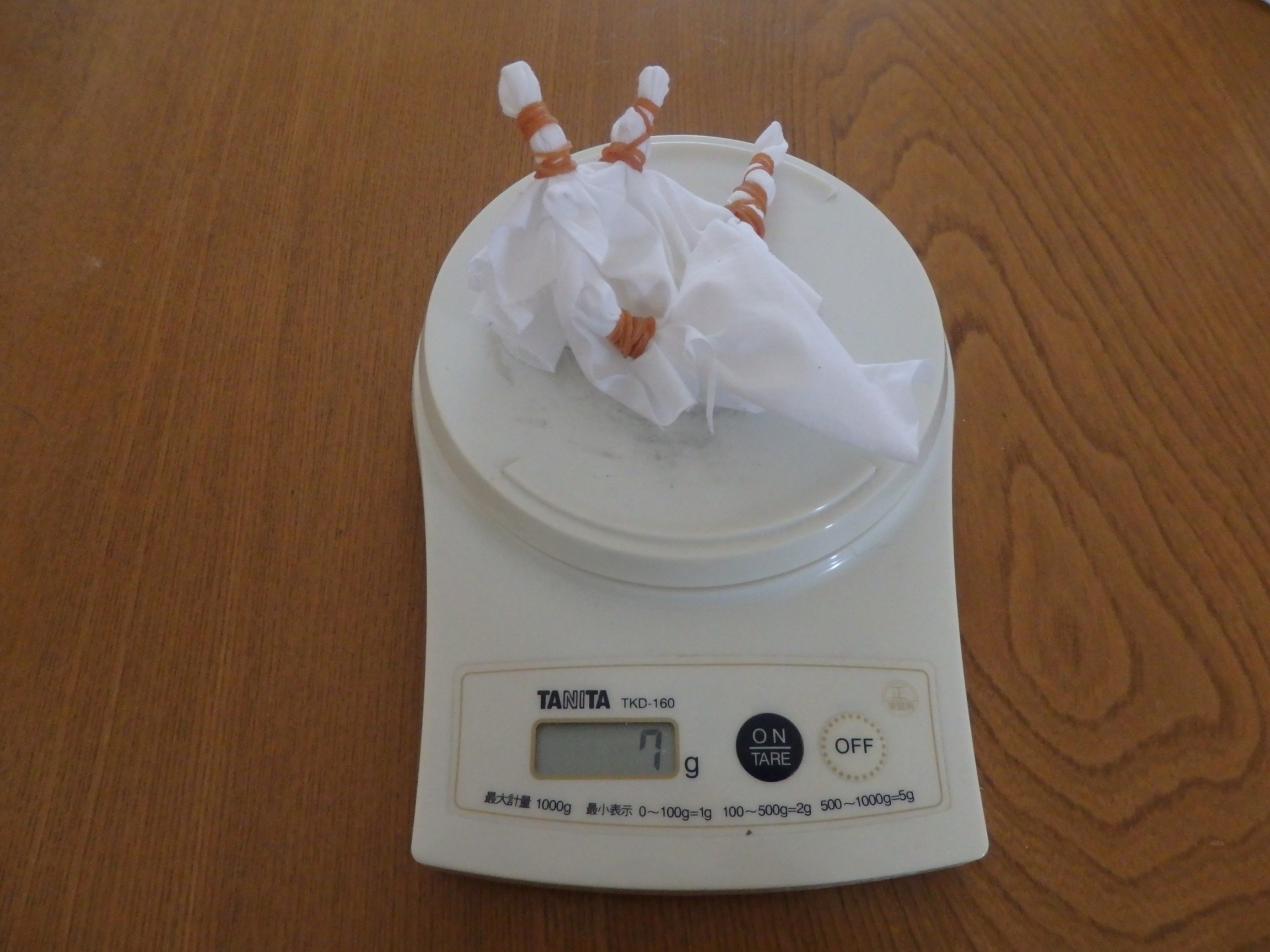 |
| Gauze (5 cm x 5 cm) | Challenge ver. with pattern 1 Cotton cloth (25cm x 25cm) | Challenge ver. with pattern 2 A piece of cotton cloth (approx. 21cm x 23cm) |
Method ~Report~
Step 1: Make the dyeing liquid
①Chop skin of plants (vegetables) into small pieces, put them in a pot, pour in enough water to soak the cloth, cover with a lid, and place over high heat.
②Bring to a boil, then reduce heat and simmer for 20 minutes.
←Because the dye precipitates in the dye liquid as it cools.
③The dye liquid is ready!
| ①Boil the onion skin. | ②Strain the contents of the pot while still hot. | ③The finished dye. |
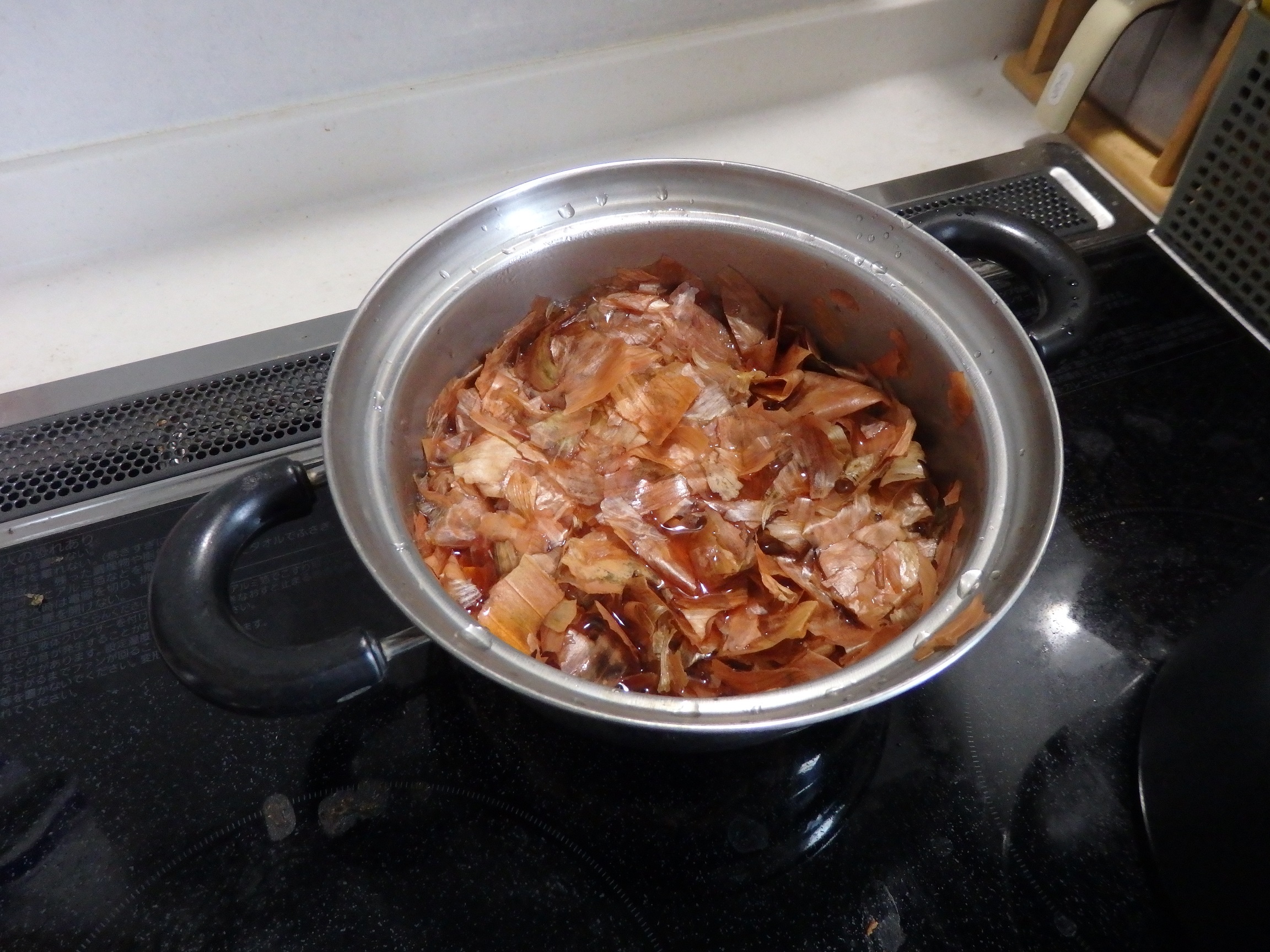 |  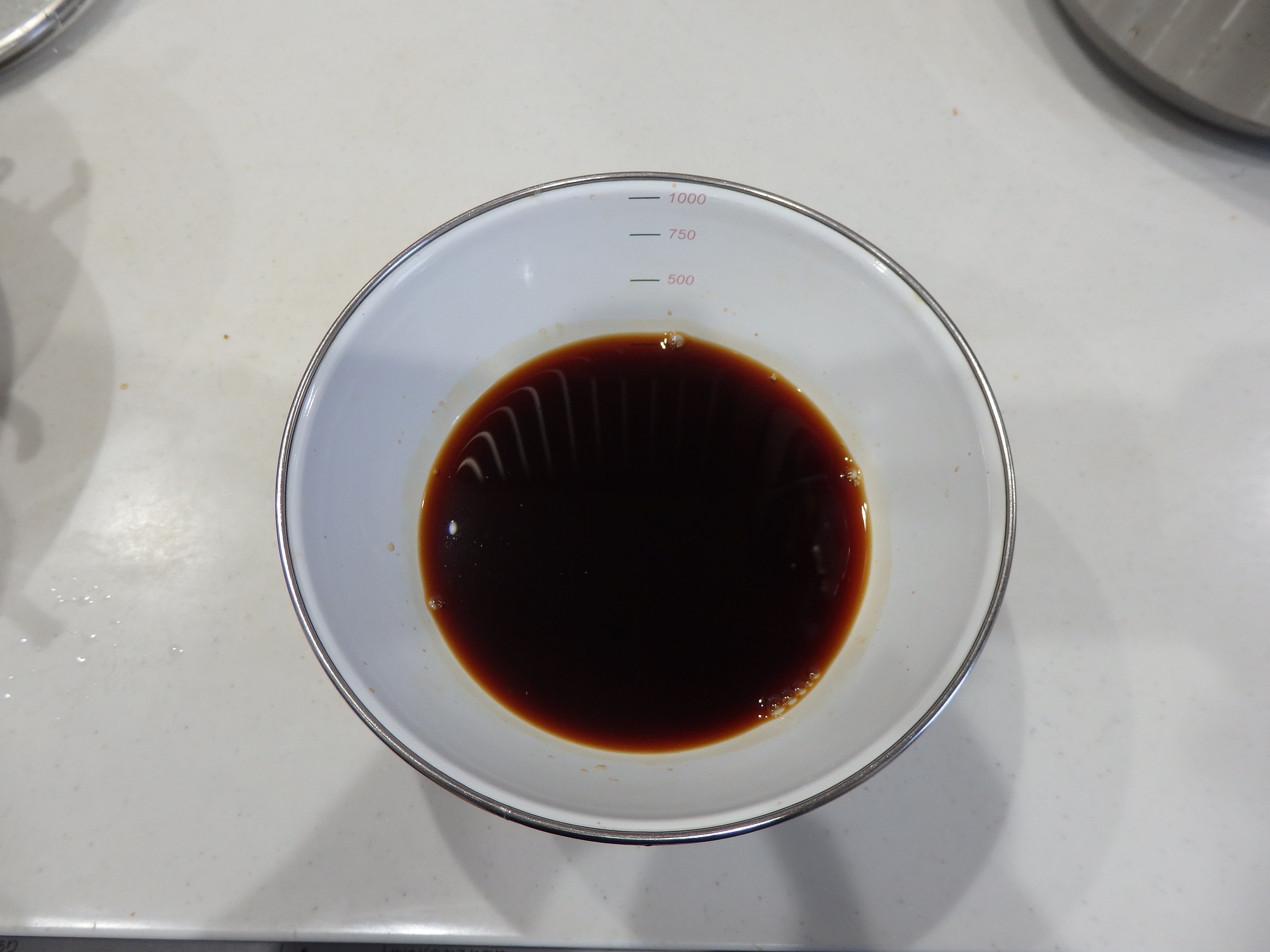 | 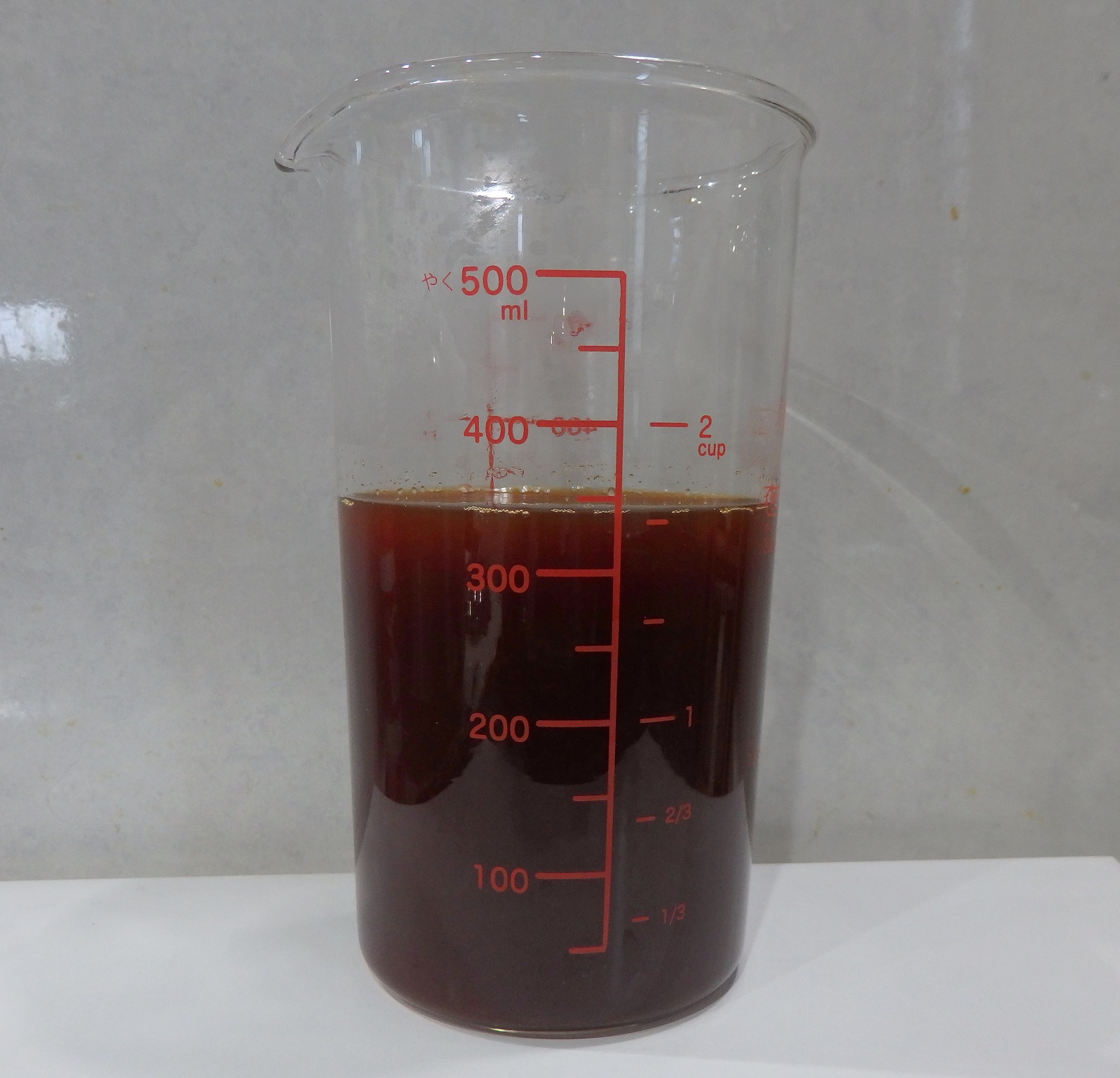 |
☆This recipe
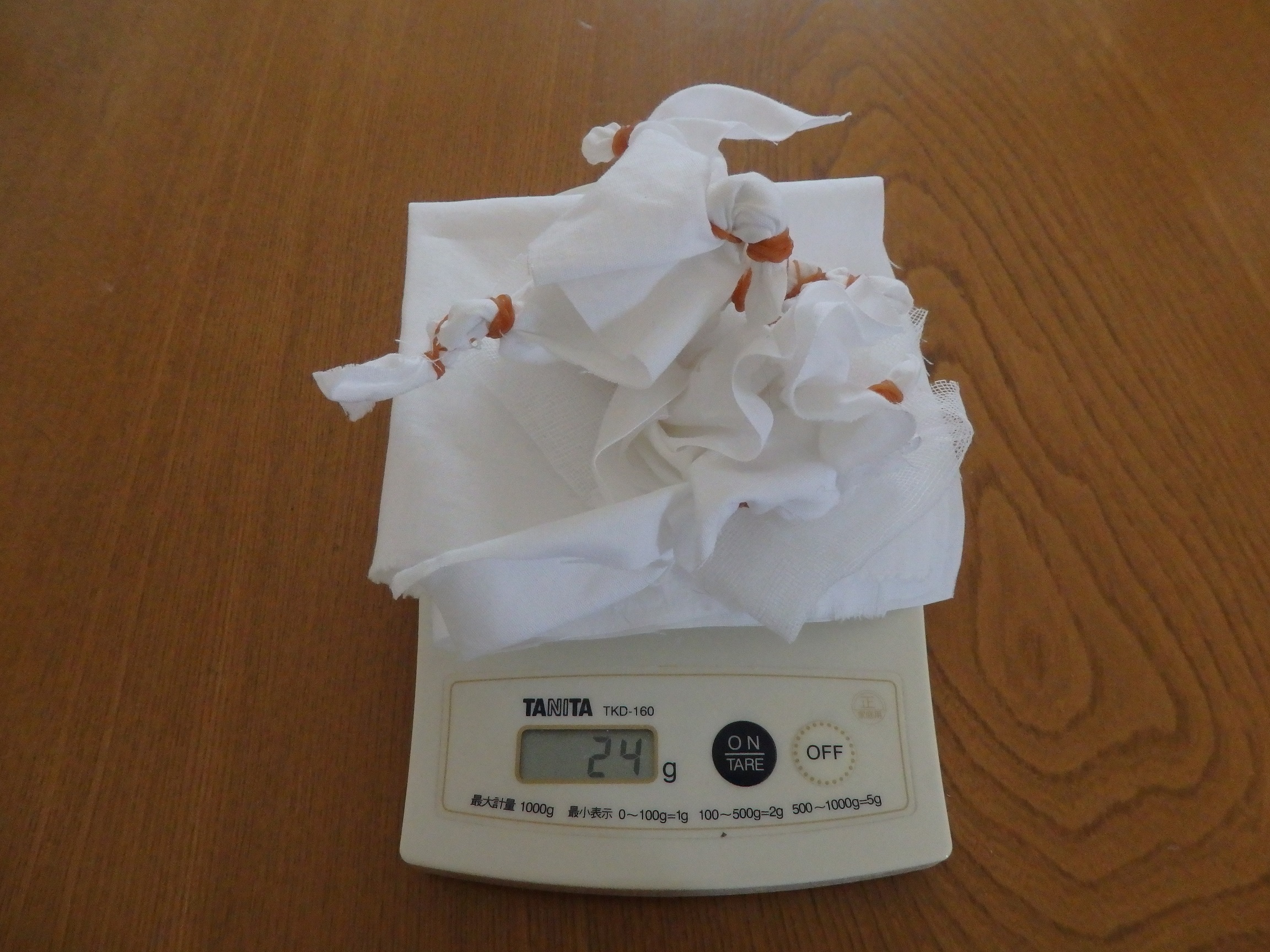


A total of 24 grams of cloth was dyed using 50 grams of onion skin and 600 ml of water to make 350 ml of dye.
Regarding the amount of dye
⇒It is easier to dye than I expected. I think I can dye the same way with dye liquid that I can just barely dip in.
⇒You can use a smaller amount of onion and water.
Step 2 Dye the cloth
①Soak the cloth in warm water and lightly dehydrate it before dyeing ← To prevent unevenness in dyeing
※point※
Before this, tie the cloth with a rubber band to make a pattern.
②Put the dye liquid and cloth in a pot and heat it.
③Once it comes to a boil, reduce the heat to low and simmer for about 10~15 minutes, occasionally spreading out the cloth, then turn off the heat and leave it to soak for about 20 minutes.
※point※
Prepare the mordantliquid while soaking in step ③.
④Take cloth out from the dye solution, wash lightly with warm water, and dehydrate.
| ①Challenge to the patterned ver | ②③I'm going to boil it. |
 | 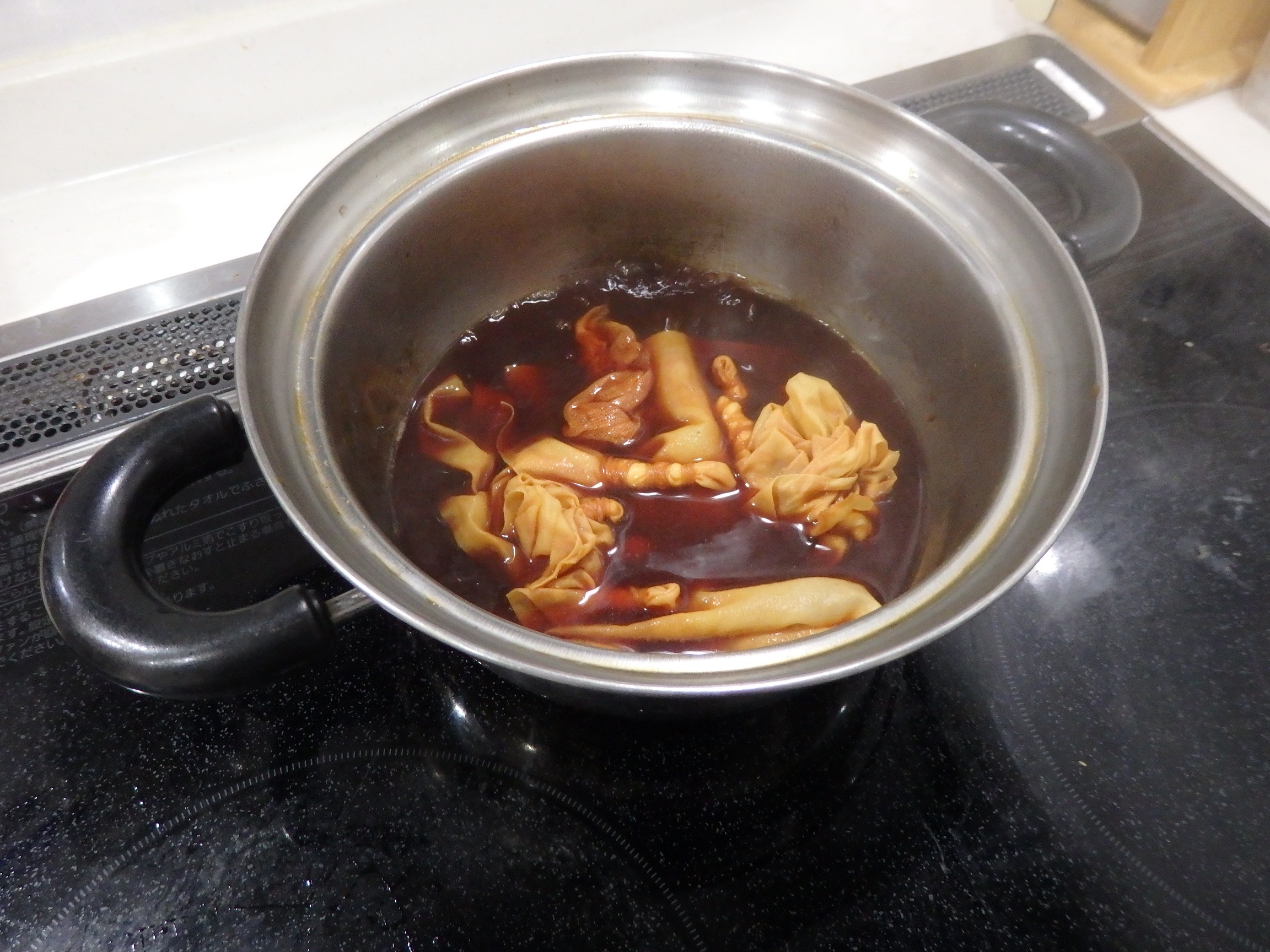 |
Step 3-1 Making mordant liquid
I used alum as a mordant
.
The basic amount of alum is 2g per 1L of hot water.
-The alum we used-
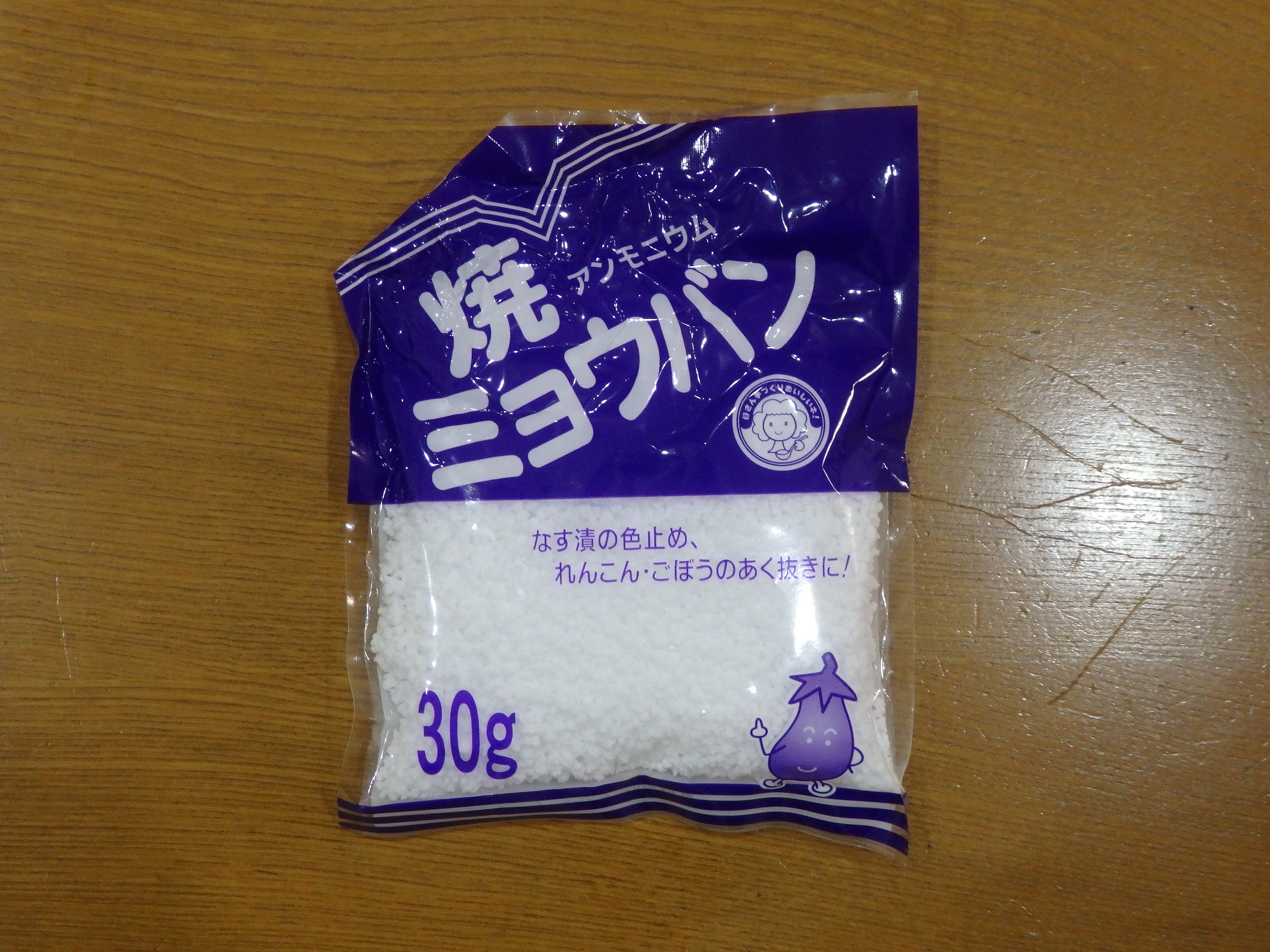
This time I didn't need 1L of mordant, so I dissolved 1g of alum in 500ml of hot water to make the mordant liquid.
When I tried to dissolve alum in water, it became saturated and could not be dissolved easily, so I dissolved it in hot water at about 70-80 degrees Celsius to make the mordant.
It looks like clear, ordinary water.
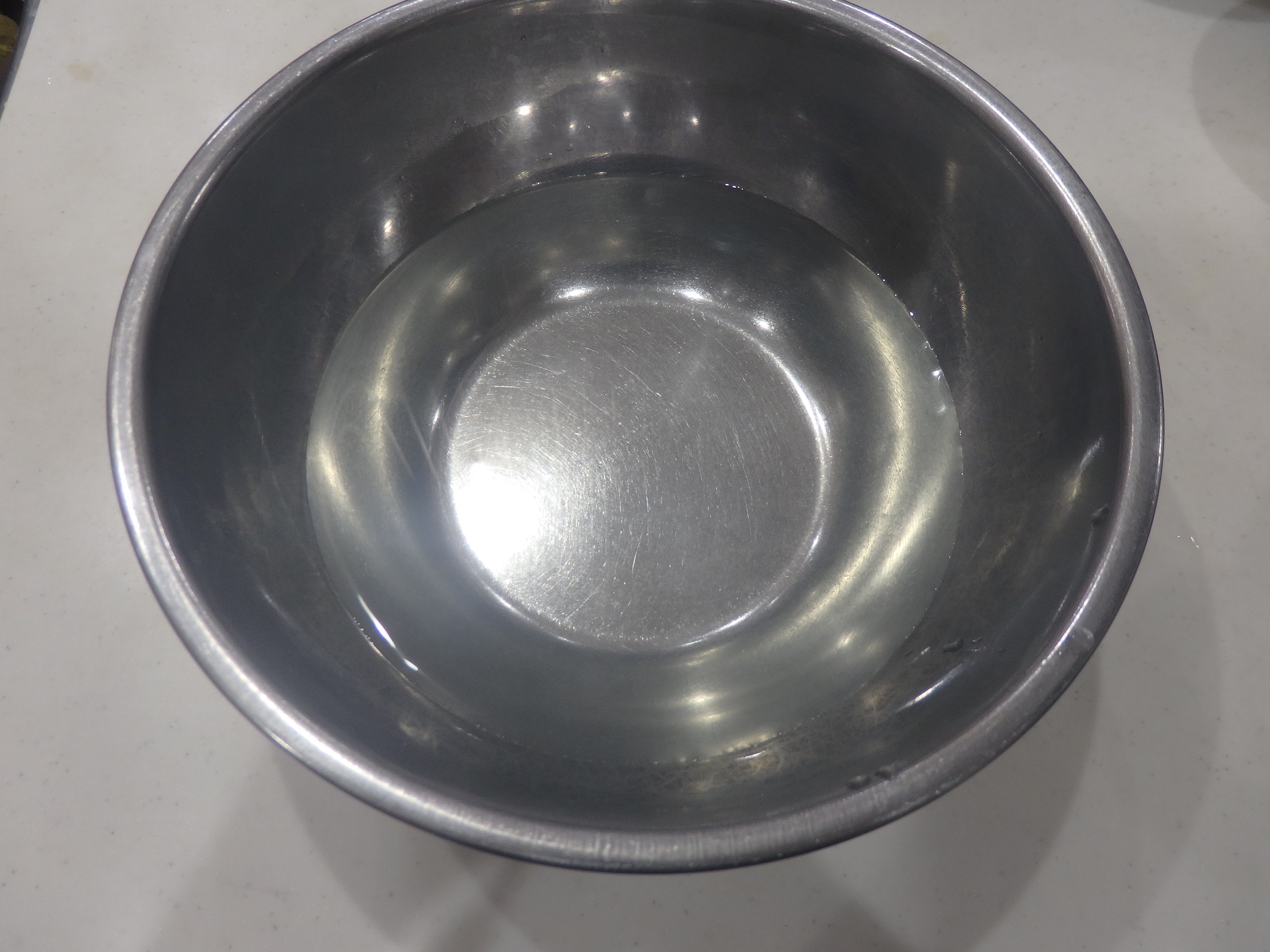
Step 3-2 Mordanting work
①Wash the cloth several times with warm water, remove excess dye from the cloth, and lightly dehydrate it.
②Leave it in the mordant liquid for about 20 minutes.
③Wash the cloth lightly under running water, and then dry it.
I was surprised to see how the color changed as soon as it was dipped in the mordant.
As the color change is beautiful, don't miss it!
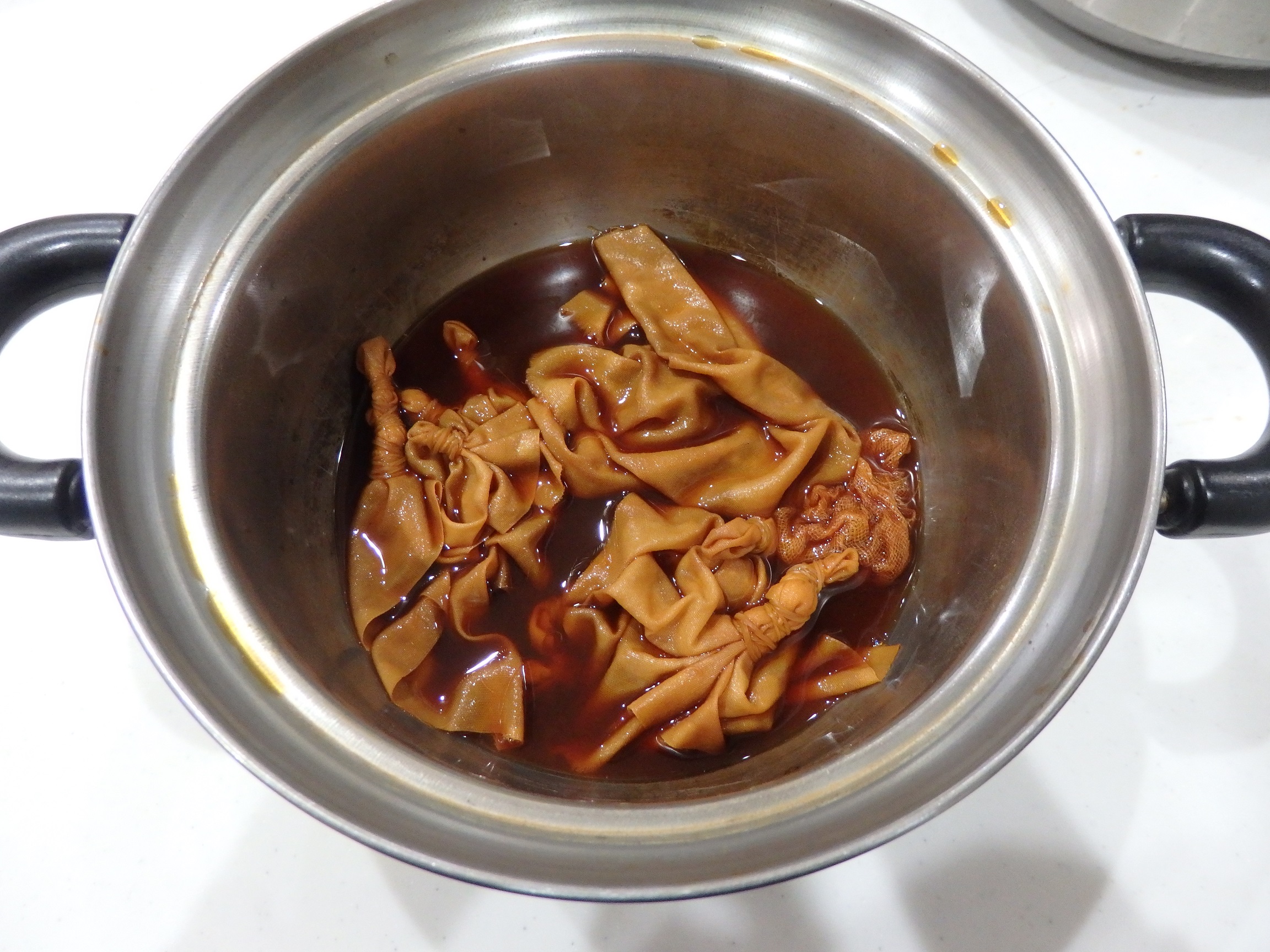

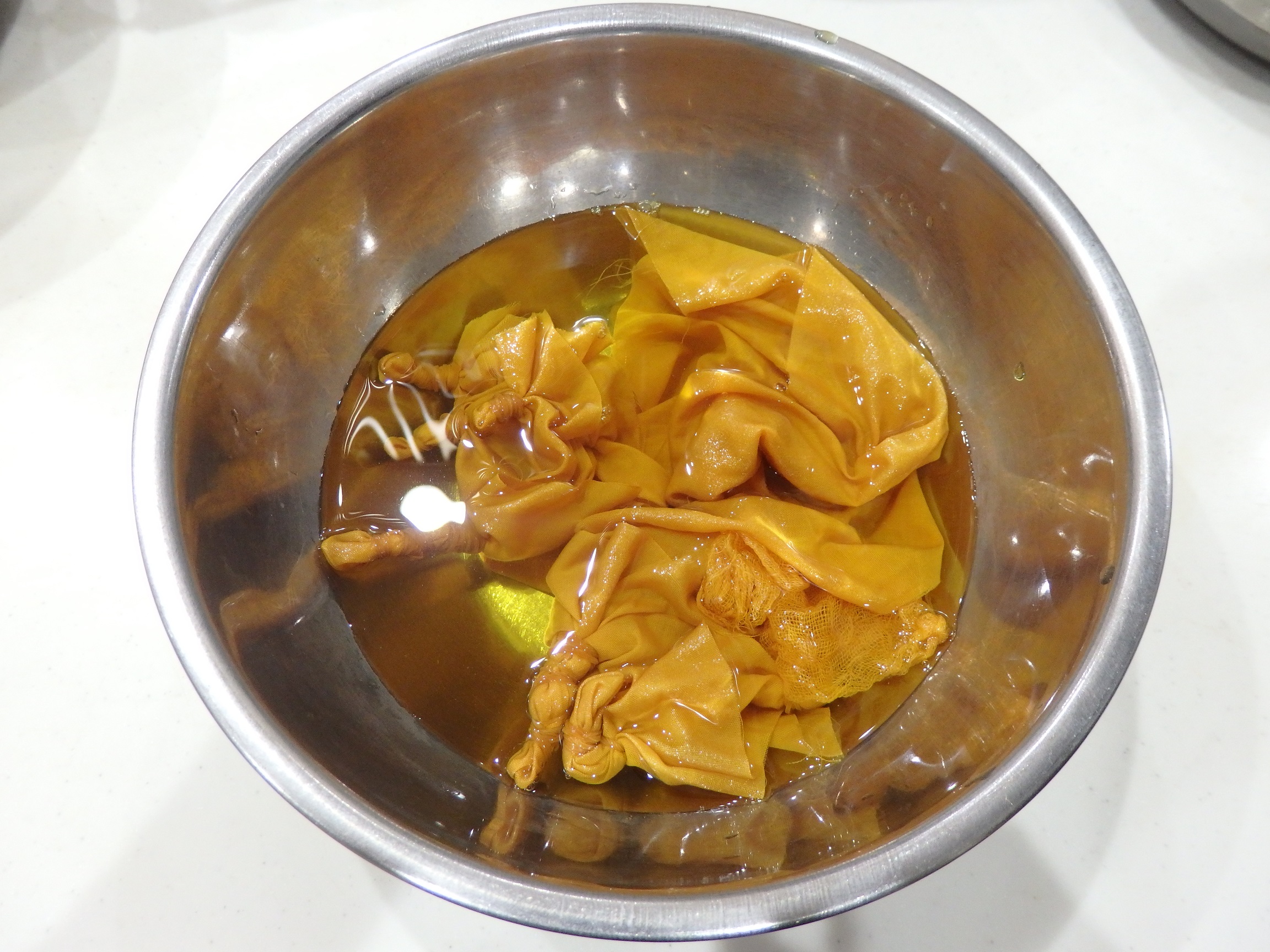
Finished!!!
Using onion skin,
I was able to dye it a very bright yellow (a traditional Japanese color: like golden brown).

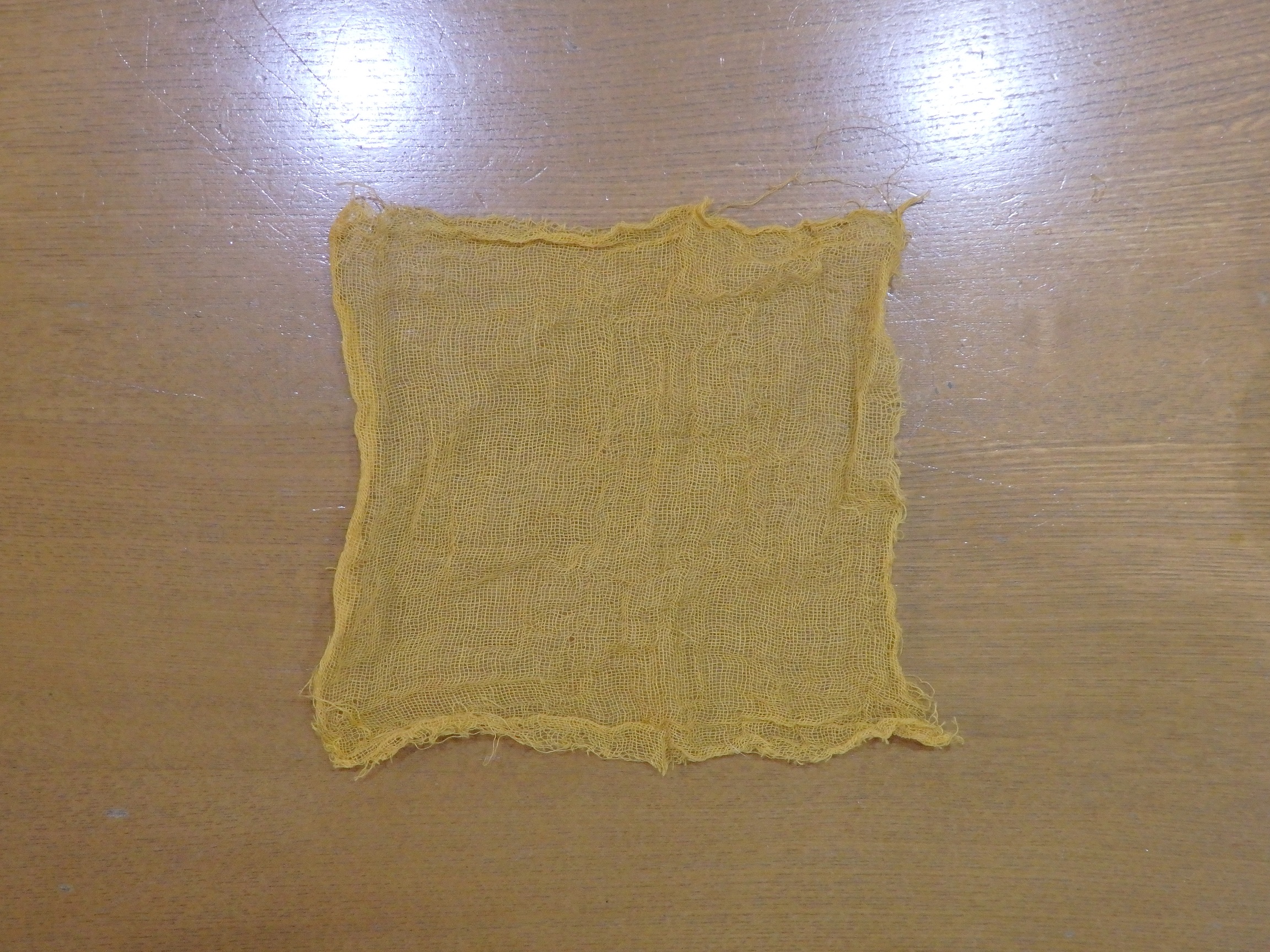 | 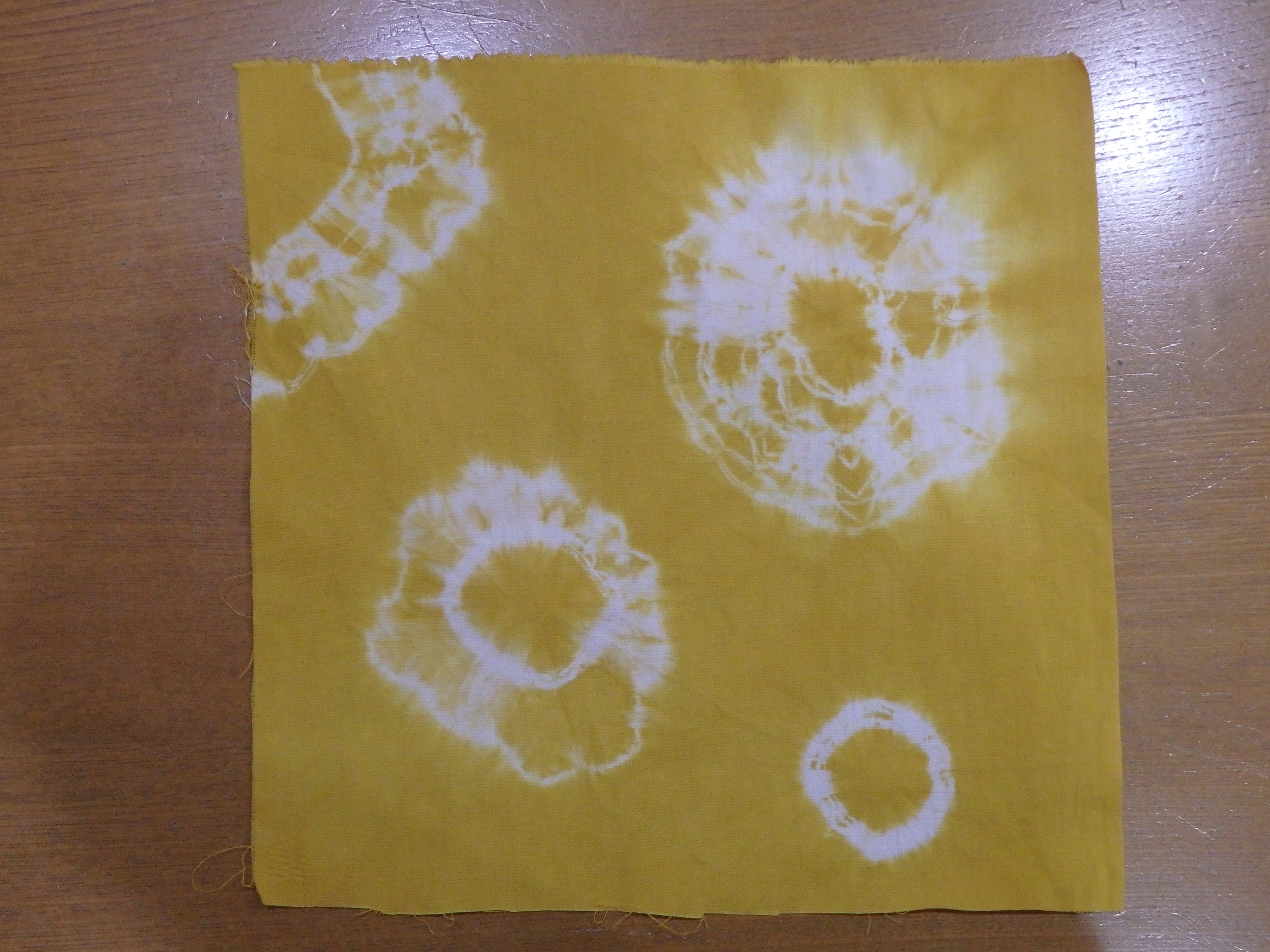 | 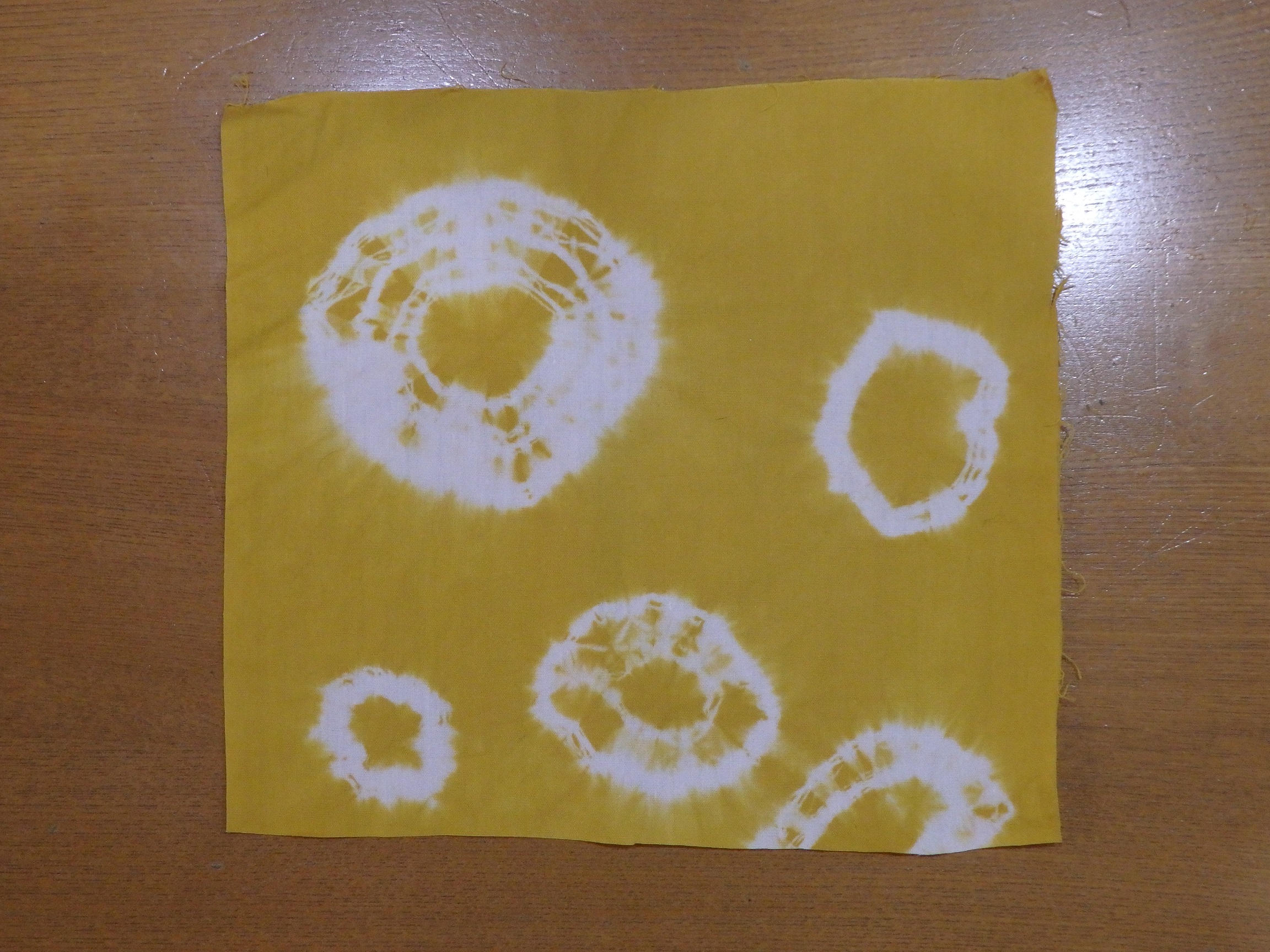 |
| Gauze (5 cm x 5 cm) | Challenge ver. with pattern 1 Cotton cloth (25cm x 25cm) | Challenge ver. with pattern 2 A piece of cotton cloth (approx. 21cm x 23cm) |
Impressions

|
I'm glad I was able to enjoy the experience of herbal dyeing.
I was surprised to see a brighter yellow color than I expected. There was nothing special that I had to prepare, and I was glad that I could do it easily. The color seemed to change depending on what mordant was used, so I thought it would be fun to try this as a independent research project during the summer vacation. |
References
For more information on herbal dyeing and other methods, please see
Kunio Kato, Dyeing Notes for Plants and Trees, Graph Inc.
All the photos of the herbal dyeing experiments were taken by the members at their homes.


